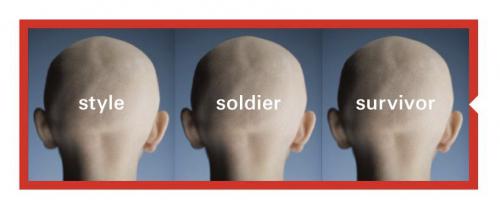You are here
Introducing Ideology with HSBC Advertisements
Primary tabs

HSBC advertisement
This in-class activity uses the popular HSBC ad campaign (a tryptich of the same image with different value labels) to introduce students to visual rhetoric and ideology. After discussing the ads, students create their own version.
A computer-enabled classroom will allow for the full activity, in which students create their own version of the ad campaign. This could easily be adapted to an activity without technology.
A relatively straightforward exercise, this in-class activity serves as a fruitful introduction to talk about commonplaces, ideology, and visual rhetoric. The ads themselves address the issue of values through their captions, such as "The more you look at the world the more you realize that people value the same things but in different ways."
If adapting for use wihtout technology, you might make up some handouts with three unlabeled images and ask students to come up with labels. Similarly, if you don't want to take up the full class period, you could pre-select images to provide students.
As your reading from Picturing Texts discussed, we learn how to se the world in particular ways. As the authors argue, "we construct our realities as we learn to see."
While this has certainly been a theme throughout the course, today's exercise addresses how the way that we see/read texts tends to reflect our own values or ideology. Ho we interpret an image can sometimes say more about us than the image itself.
The international banking firm, HSBC, has an ad campaign that reflects this multi-faceted approach to people and reality.
The triptych above labels the same image with three very different value judgments, illustrating quite explicitly how the same object can retain radically different meanings depending on the viewer.
One of the goals of this course (and an essential element of visual analysis) is for you to learn to consider multiple readings of the same image. As such, and as a handy segue into our unit on advertising, for today's exercise you'll create your own version of the HSBC ads.
With a partner (or two), find an image/object that you can label with at least three different meanings - being careful to use an image that is licensed for adaptive reuse. You can find these images by either using the google advanced image search functions or the filters in a Flickr search (both of which I will demonstrate in class). We'll be talking more about Fair Use and Creative Commons as we move into our final unit, so this is good practice to get you started.
After finding an appropriate image, using either photoshop or an image editing platform of your choice, compile the three images into a tryptich and label them with your different value readings (just as in the HSBC ads).
My students had a great time with this exercise and came up with some nice examples. During the discussion, we also talked about design and parallellism.
In this course we will explore the ways in which images can be read, analyzed, constructed, and manipulated. We will interrogate how images inform our reading of historical and political events, of personal identity, of public and private spaces. We will think through issues of self-presentation: how our stylistic choices convey messages to the world around us, and how we interpret the choices of others. We will look at the spaces we frequent and consider the rhetorical effects of everything from the architecture to the furniture to lighting. In short, we will investigate how the visual (non-linguistic, non-textual) world conveys its messages.
-

- Log in to post comments

